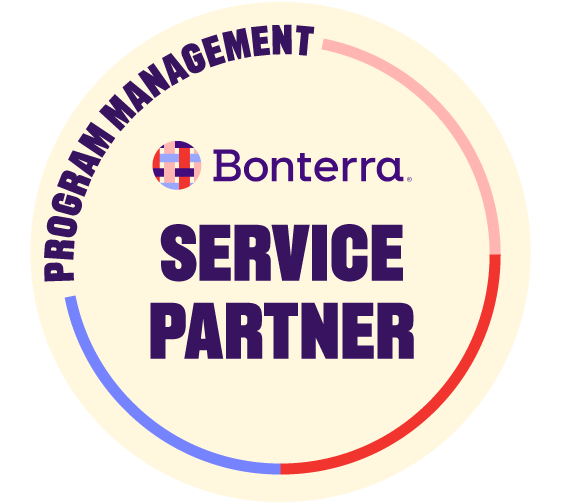As the year comes to a close, nonprofits and charitable organizations are gearing up for their most crucial fundraising period.
The year’s final month tends to be a powerhouse when it comes to generosity and making a positive impact.
In fact, according to the 2023 M+R Benchmarks Report, December giving accounts for roughly one fourth (26%) of annual nonprofit revenue.
Read on to learn how you can capitalize on the festive spirit and create a successful year-end giving campaign that not only meets your organization’s goals but also touches the hearts and minds of those who matter most.
Let’s dive in and discover how you can effectively engage donors, maximize contributions, and create a lasting impact with your end-of-year giving campaign.

7 Steps to a Successful Year-End Giving Campaign
1. Set Clear Goals and Objectives
Running a successful end-of-year giving campaign requires setting clear goals and objectives from the very beginning. By doing so, you provide a clear direction for your efforts. You also ensure everyone involved is aligned with the campaign’s purpose.
To create achievable yet challenging targets, you should consider a variety of factors. For example, your organization’s past performance, fundraiser trends, and external factors that could impact your progress. By looking at your historical data, you can create a comprehensive plan that inspires your team and supporters to strive for success.
In addition to financial goals, it’s essential to identify the purpose behind your year-end giving campaign. Clearly communicate how the funds will be utilized, whether it’s to support a specific project, expand programs, or make a tangible difference in the lives of beneficiaries. Having a defined purpose not only inspires donors but also helps you craft a compelling narrative that connects with their emotions.
To ensure your goals are measurable, establish key performance indicators (KPIs) that align with the objectives of your campaign. These KPIs could include the total amount raised, the number of new donors acquired, or the percentage increase in year-end donations compared to the previous year. Tracking these metrics allows you to evaluate progress, make informed decisions, and celebrate milestones along the way.
When everyone understands what you aim to achieve and why it matters, they become more invested in your success and are more likely to contribute generously. With this approach, you can set the stage for your end-of-year giving campaign to be your most impactful yet.
2. Segment and Target Your Audience
As you gear up for your end-of-year giving campaign, it’s important to have a clear strategy for engaging your audience. However, it’s not enough to simply blast your donors with generic messaging. If you want to maximize the impact of your campaign, you need to have a clear strategy for engaging your audience.
Segmentation is a critical component of this. It allows you to tailor your messaging to each group’s unique characteristics and motivations. This approach can yield significant results.
According to a study by Sector3Insights, donation behavior is driven most strongly by personal and emotional connections and a sense of urgency.
So, as you prepare for your campaign, make sure you take the time to analyze your donor database and experiment with targeted messaging. By doing so, you’ll be able to optimize your campaign for greater effectiveness. Just remember to remain flexible and responsive to feedback. This will allow you to continually refine your segmentation approach as your campaign progresses.
3. Craft a Compelling Story and Message
As a nonprofit organization, your year-end giving campaign can make or break your fundraising efforts for the upcoming year. However, with so many organizations vying for donations, it can be challenging to stand out amongst the crowd.
This is where the power of storytelling comes in. It’s an effective way to connect with people on an emotional level and elicit a response. By sharing stories of the impact, you can inspire generosity and drive meaningful impact for your cause. In fact, a study by Stanford University found people are 22 times more likely to remember a fact when it has been wrapped in a story.
But it’s not enough to simply tell a story. Nonprofits must also ensure that their message is clear, concise, and consistent across all channels. This means using data to back up your claims and painting a vivid picture of the work that they do. Data is your nonprofit’s secret marketing weapon. It can enhance your stories’ impact and credibility, validate your organization’s work and even encourage future contributions.
By telling your story effectively, you can inspire generosity and drive meaningful impact for your organization and the communities you serve.
Download our white paper to discover the key steps to create a compelling story and message.
4. Implement a Multi-Channel Marketing Strategy
Using a mix of channels creates a cohesive and balanced approach, increasing the chances of capturing donors’ attention and interest. It can increase engagement rates by more than 300% and also allows nonprofits to cater to different donor segments with specific needs, preferences, and demographics, such as age, location, and giving history. By customizing the messaging, content, and tone, you can build stronger relationships with your supporters and retain their loyalty.
Leveraging the strengths of different channels allows you to connect with donors in diverse ways, maximizing visibility and impact. Consistent messaging, tailored content, and integrated cross-promotion will help create a unified and compelling experience for your supporters.
In summary, a well-executed multi-channel marketing strategy is a powerful tool for reaching and engaging a wide audience during your year-end campaign. By leveraging the strengths of different channels, tailoring your content, and ensuring consistent messaging, you can create a unified and compelling experience that motivates your supporters to take action and make a meaningful difference.
Learn how to maximize your year-end giving campaign’s visibility and ensure your message resonates with different donor segments in our white paper.
5. Leverage Peer-to-Peer Fundraising
Peer-to-peer fundraising has become a popular fundraising strategy in recent times, owing to its potential to reach a wider audience and engage new networks of potential donors.
Traditional fundraising methods that rely on a single solicitation source are often unable to attract new supporters or expand their donor pool. Peer-to-peer fundraising, on the other hand, enables volunteers to leverage their social networks, connecting with potential donors who may be oblivious about the organization’s mission and activities. A 2019 poll by YouGov found that 39% of Americans say they’ve donated to a charity because of the request of a family member.
Moreover, it’s an effective way of raising money in year-end campaigns, as it provides a unique opportunity to capitalize on the festive and charitable spirit of the season. During this period, people are often more generous towards charities and causes they believe in. By tapping into this spirit of giving, nonprofits can encourage their supporters to engage their family, friends, and colleagues to support their cause, and contribute to their end-of-year giving campaign.
With the right support and resources, your passionate supporters can become powerful advocates for your cause. They can play a crucial role in the success of your year-end campaign.
Find out how to leverage peer-to-peer fundraising in our white paper.
6. Optimize Donation Process
Optimizing your donation process is a critical aspect of maximizing your end-of-year fundraising efforts. A smooth, intuitive, and hassle-free donation process can significantly increase the likelihood of potential donors completing their donations.
A confusing or overly complicated donation process can lead to a high rate of abandoned donations. This not only means a lost opportunity to secure a donation but also the potential loss of a long-standing supporter who may now question the efficacy of your organization.
To avoid this, it’s important to make sure your donation process is optimized for simplicity and ease of use. This could involve streamlining the number of steps in the process, minimizing the amount of required fields and information, minimizing page load times, and ensuring the process is mobile-friendly (this can increase your donations by 126% on average!). We’ve summarized the key steps to optimizing your donation process in our free white paper.
In summary, optimizing your donation process is critical to the success of your year-end campaign. Smooth and intuitive donation process can minimize the risk of abandoned donations, increase the likelihood of securing donations, and enhance the overall donor experience.
7. Monitor and Analyze Campaign Performance
Monitoring and analyzing your campaign performance is crucial for understanding the effectiveness of your strategies and making necessary adjustments. It gives insight into what’s working, what isn’t, and where there are opportunities for improvement.
By monitoring and analyzing your campaign performance, you can ensure your strategies are effective. It also helps you know whether you’re on track to reach your fundraising goals. It provides valuable insights into your donors’ behavior and preferences. This allows you to better tailor your efforts to their needs and interests.
Our white paper brings you 7 expert tips on how to leverage data and insights to optimize your fundraising strategies, tailor your communications and engagement efforts, and ultimately achieve greater impact for your cause.
Embracing the Spirit of Giving with Year-End Campaigns
End-of-year campaigns are a great way to capitalize on the giving spirit that comes with the end of the year. They also offer unique and customizable opportunities for your donor base to increase their giving not only during the holidays but all year round.
However, whether you’re a new nonprofit or one with experience, end-of-year campaigns can be a daunting task, especially as you’re simultaneously preparing your end-of-year reports. From planning out what type of campaign to run, setting goals and objectives, to knowing the right channels for outreach – there’s a lot to consider when launching a successful end-of-year giving campaign. It can take time and effort, but it could result in a larger donor pool and increased donations.
The good news is you can successfully execute a year-end giving campaign with careful planning and diligence. By following the steps outlined in this blog, you will be well on your way to running an effective campaign.
If you need more help, we recommend downloading our comprehensive white paper on year-end giving . It’s packed with information and resources that will put you even further ahead.
As we close out this year together, let’s join forces and work to produce lasting change that can live beyond.



